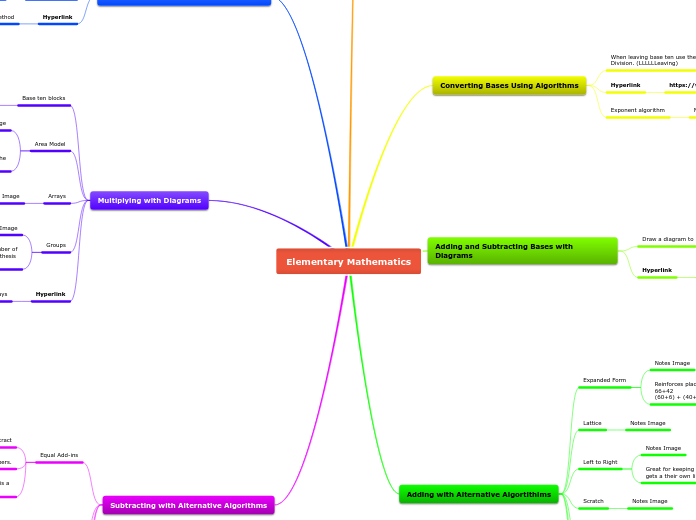
Units, Longs, Flats, Cubes
Units, longs and flats can be represented as base ten blocks.
Draw diagrams using long rectangles to represent longs, small dots to represent units and large squares to represent flats.
In base ten, units= 1, longs=10, flats= 100 and cubes= 1,000
Using these diagrams, you can convert number of other bases to base ten and numbers in base ten to other bases.
Notes Image 1
Notes Image 2
Hyperlink- Base ten blocks
When leaving base ten use the algorithm: Upside Down Division. (LLLLLLeaving)
Notes image 3
Hyperlink
Exponent algorithm
Notes image 4
Tip: start by labeling the exponents before you write out the equation.
Draw a diagram to represent base ten blocks
When adding bases draw each number out using units, longs and flats and then add them together.
For subtraction, start out by making a diagram for the number you will be subtracting from. Once that diagram is made you can start taking the amount of units, long and flats that the number your subtracting represents.
Hyperlink
Expanded Form
Notes Image
Reinforces placement value:
66+42
(60+6) + (40+2)
Lattice
Notes Image
Left to Right
Notes Image
Great for keeping placement value since each placement value gets a their own line when adding them up.
Scratch
Notes Image
Friendly Numbers
Notes Image
When adding numbers find pairs of numbers that more easily than the others first.
Trading Off
When trading off numbers in adding, you take units from the other number to make it easier to add. Example:- 8+6, you would take 2 from the 6 to make it 10+4.
Hyperlink
Scratch method:
://www.coolmath4kids.com/math-help/addition/scratch-addition
Lattice Multiplication
Notes Image
Expanded Form
Notes Image
Hyperlink
Lattice Multiplication Method
Base ten blocks
Notes Image
Area Model
Notes Image
Draw a box and use expanded form to set up the area model for the side and top of the box. Depending on where the addition signs are placed is where you draw a line to divide the boxes. Then multiply.
Arrays
Notes Image
The first number should represent the amount of dots in rows and the second number being multiplied represents the amount of dots in columns.
Groups
Notes Image
The number on the outside of the paranthesis is the number of groups you will have and the number inside of the parenthesis is the amount in each group
Hyperlink
Multiplication with arrays
Equal Add-ins
Example: 56-18
56+2=58
18+2=20
Adding 2 to each number makes them easier to subtract
You always have to add the same amount to both numbers.
Adding an amount that makes the bottom end with a zero is a good way to simplify the problem.
Expanded Form
Like addition in expanded form, you have to expand each number in the problem. For example,
79-67
(70+9)-(60+7)
After expanding, then solve by subtracting 60 from 70 and then 7 from 9
*Less types than alternative addiction algorithms
Hyperlink